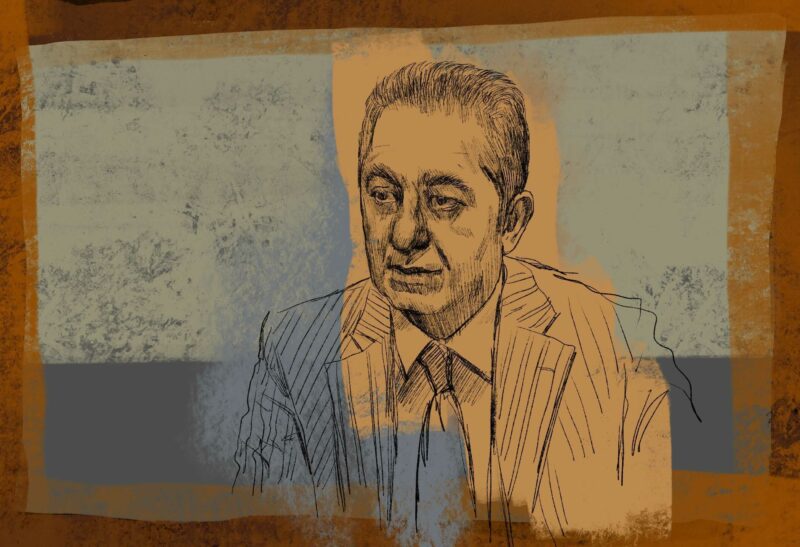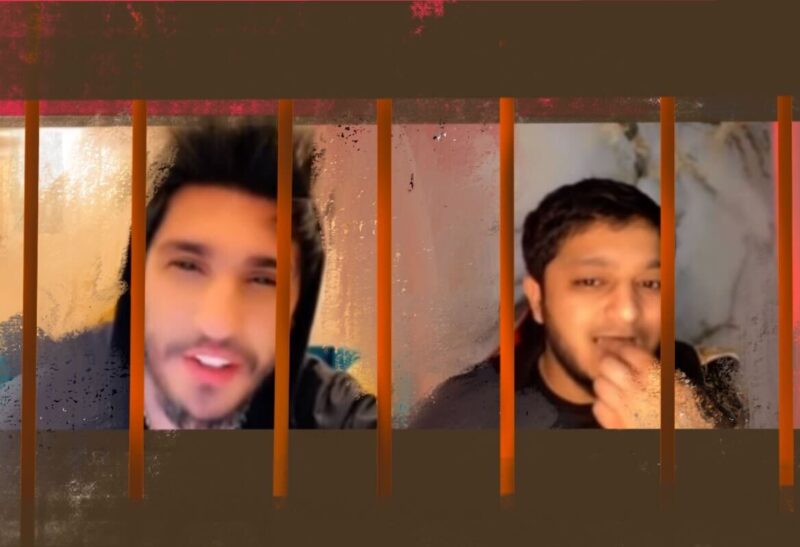This article was originally published by
Radio Free Europe/Radio Liberty
For 77-year-old Safura Ahmedova, living in Azerbaijan along one of the globe’s most notorious drug-trade routes has come at immense cost: two sons and a husband dead, and another son in prison.
“My elder son was married and had a good job. He later became a drug addict,”
Ahmedova tells RFE/RL’s Azerbaijani Service
. “We struggled to cure him, but it didn’t help. He shot up, poisoning his body, and died. He left behind two children.”
But the drugs that have overrun Ahmedova’s home district of Astara, which borders Iran and the Caspian Sea and makes up Azerbaijan’s southernmost corner, were not done destroying her life and family.
“My husband died after my second son passed away, also from drug addiction. I pinned hope on our youngest son, but he got addicted, too,” Ahmedova says. “He became difficult, quarreling with others, robbing when he needed drugs. His family left him. He was arrested for robbery and is in prison now. Only one son managed to avoid addiction.”
While officials in the energy-rich Caucasus country of nearly 10 million deny that Azerbaijan is experiencing a drug crisis, residents of Astara and its northern neighbor, the Lankaran district, tell another story.
“Astara borders Iran, and drugs are mainly coming from Iran. Drug addiction is being tackled, but it’s not enough. And tons of drugs are shipped in from Iran, but only a small fraction are confiscated,” claims Elchin Ibrahimli, a local activist in Astara district.
Official data supports locals’ conclusions.
A 2016
U.S. State Department report
said that Azerbaijan was increasingly a top transit country in the illegal international drugs trade, as it lies in the middle of one of the major routes from Afghanistan — producer of 90 percent of the world’s opium supply — and Iran to Europe.
Figures from Iran, which has long battled drug smuggling and has seen its official number of drug addicts double over the past six years, document that more drugs are being seized on its borders.
Many of those illegal drugs — including methamphetamine, heroin processed from Afghan opium, and other drugs — cross Iran’s 765 kilometer border with Azerbaijan.
Astara district, hemmed in by mountains to the west and the Caspian Sea to the east, is an accessible and major entry point on the road to Europe.
No Drug Problem, Say Azerbaijani Officials
Azerbaijani data indicates that the official number of drug addicts is indeed on the rise. According to the Statistics Committee, there were 29,448 drug addicts registered in 2016 in the country, compared to 28,555 a year earlier. Compared to 2000, when 14,010 people were registered, the number of drug addicts in Azerbaijan has more than doubled.
Addressing the common perception that addicts’ reluctance to register skews the accuracy of the count, officials defend their data.
“We have given the information to the media. We cannot say anything more,” says Vugar Aliyev, the chief doctor of the Lankaran Rehabilitation Center.
Azerbaijan, too, says more drugs are being seized on its border with Iran, although it does not provide figures specifically for Astara.
Of
210 drug busts in Azerbaijan in 2017
, 184 involved shipments from Iran, according to the country’s Customs Service.
That’s compares to
136 drug busts nationwide
the year before, with 109 relating to drugs coming from Iran.
Locals Look To Iran
Incidents like the
seizure in July of 260 kilograms of heroin
at a customs border checkpoint in Astara district turn the locals’ suspicion toward Iran.
Ahmedova, for one, is convinced that the drugs that decimated her family — she doesn’t specify what types of drugs they were — came from Iran, and that they have led to an unprecedented drug crisis in Astara.
“We did not have drug addicts in my generation,” the 77-year-old Ahmedova claims. “My children made friends with drug addicts and got hooked.”
Drug trafficking represents a “major challenge for Iran,” according to the UN Office on Drugs and Crime (UNODC).
“The geographical location of the country, particularly its porous 1,923 kilometer-long eastern border with Afghanistan — the world’s largest illicit opium producer — and Pakistan, has turned it into a major transit country for illicit drugs,” the
UNODC said
.
Iran is also seeing emerging trends of illicit production and trafficking of amphetamine-type stimulants (ATS), according to the UNODC.
Over the last few years, there has been a sudden increase of reported seizures of high-purity crystal meth (locally known as “Shisheh”), which has settled in alongside opium and heroin as part of Iran’s own drug problem.
Opium, the main ingredient in heroin, is the country’s most popular narcotic, making up 67 percent of consumption, according to Iran’s Drug Control Organization.
The number of people suffering from drug addiction in Iran has more than doubled in the last six years, Iranian media reported in 2017.
The head of a working group on drugs in the Expediency Council, Saeed Safatian, told the official IRNA news agency that the number of drug users
might be even higher
.
Efforts To Help Addicts ‘Falling Short’
Back in Azerbaijan, many are convinced the country’s problem with illegal drugs worsened in 2015.
That year the country’s Central Bank twice devalued the country’s currency, the manat, as slumping global prices for oil and gas sent the economy reeling. The currency lost half of its value vis-a-vis the U.S. dollar and average Azeris lost half their life savings as a result.
The economic crisis
took its toll on average Azerbaijanis
struggling to make ends meet. In 2015, suicide rates nearly quadrupled, with a total of 535 being recorded by the Health Ministry.
“Frankly speaking, unemployment, lack of things to do and — most importantly – lack of [a] sufficient social support system in place have all, in combination, contributed to the rapid increase in drug use in the regions of the country, especially after the financial and economic crisis that hit in 2015,” says Arzu Jafarli, who grew up in Lankaran, in an email response to RFE/RL.
Critics say the country is far from equipped to help addicts.
A local doctor who spoke to RFE/RL on condition of anonymity said efforts are falling short.
“What does it cost to treat a drug addict? the doctor asked, noting that outside of Baku, there are drug treatment centers in only five cities.”
In Lankaran, he claimed, the district’s drug treatment center only has 18 beds.
Written by Tony Wesolowsky with reporting by RFE/RL’s Azerbaijani Service.



